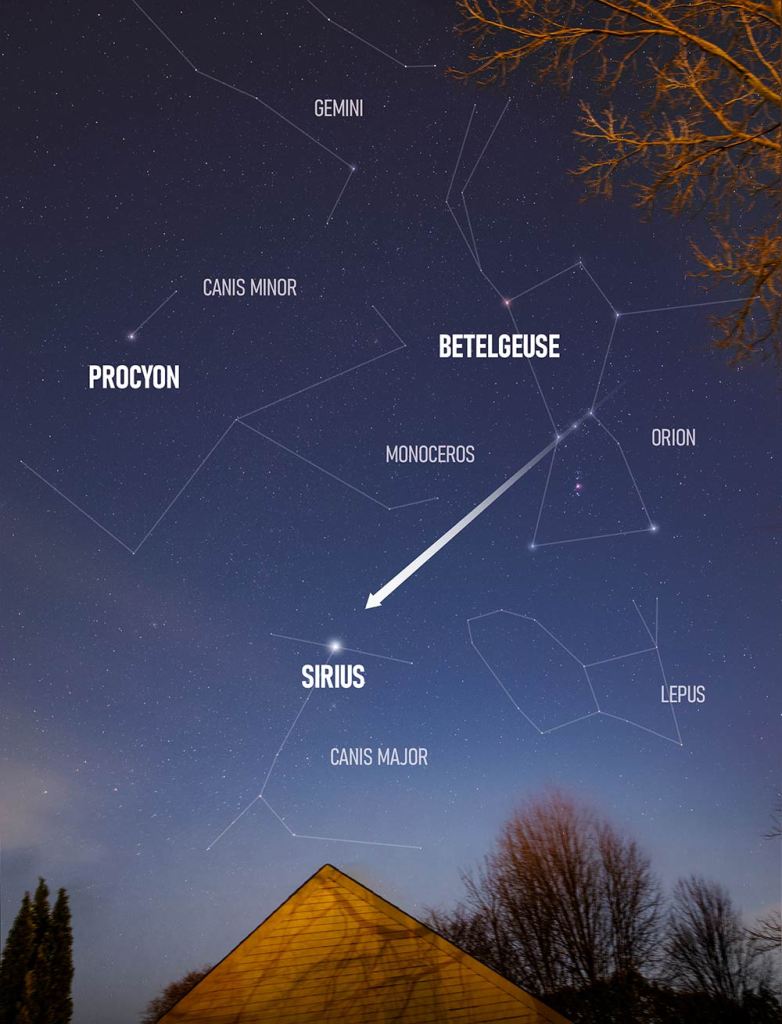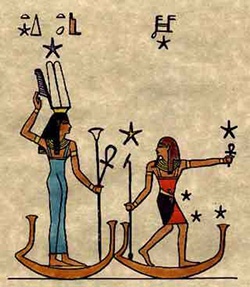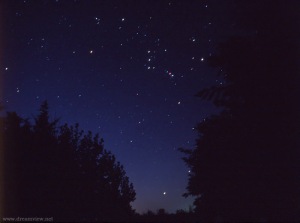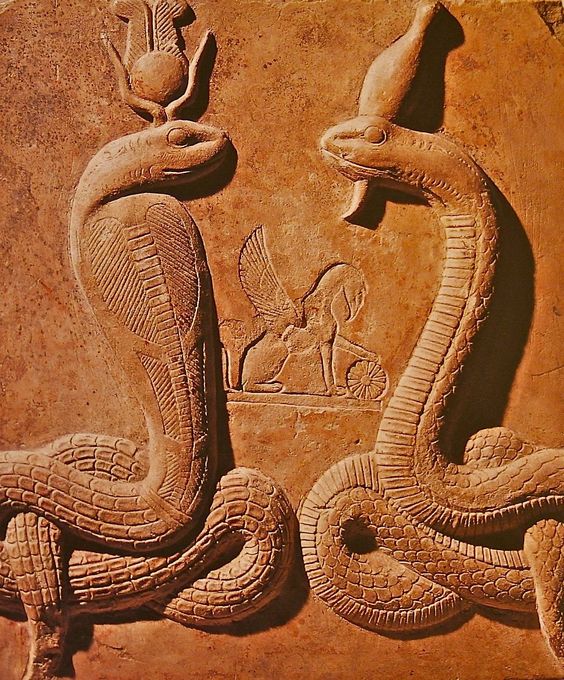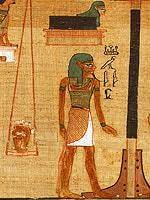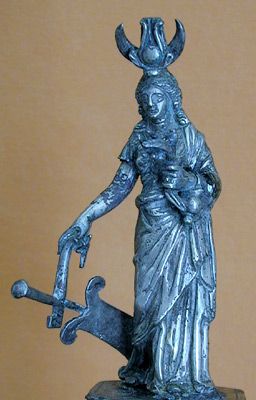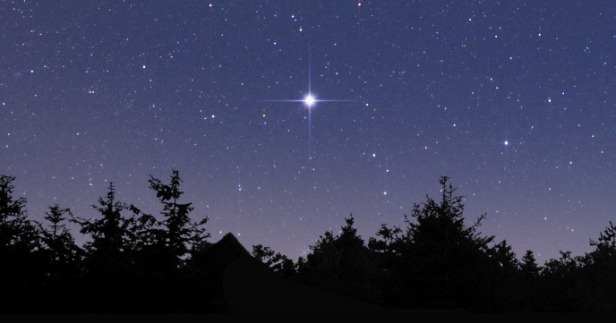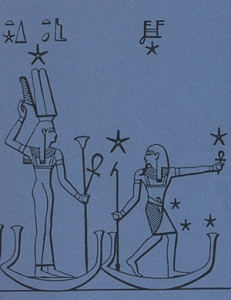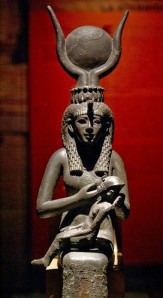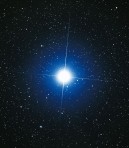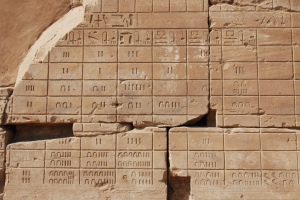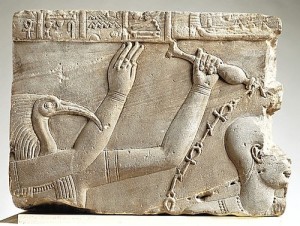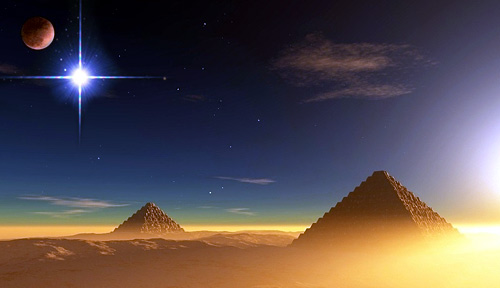This year, the holidays have not touched me.
Not Thanksgiving. Not Yule. Not any of the beautiful winter holidays of Light. I am just not feeling festive. I am too deeply concerned about my own country and much of the world. I am too deeply concerned about my community and many of the individual friends and loved ones who are a part of it.
Yet today, out of nowhere—while on a simple errand—I finally felt something. I felt the epagomenal days. I sensed myself existing in a time-out-of-time, in a strange unreality. Sound seemed dampened as a soft quietness fell over everything.
And I realized that my own feeling of unfestive unease may mirror the feelings that many ancient Egyptians would have had during their own epagomenal days.
For them, the epagomenal days were the five days before the summer rising of the Star of Isis, Sopdet (Sothis in Greek, Sirius in Latin). With the rising of Her Star, the New Year began.
(The Egyptian year had 360 days, but the solar year has 365.25. So the Egyptians made up the difference by adding five epagomenal—intercalary or “inserted into the calendar”—days at the end of the year.)
These days were also considered the birthdays of Osiris, Haroeris (Horus the Elder), Set, Isis, and Nephthys. So, you would think these would have been positive days for the Egyptians. But without the protection of the confines of the calendar, the Egyptian epagomenal days were thought to be a quite dangerous time. People wore special amulets and priests might perform the ritual of Sehotep Sakhmet, or “Pacifying/Satisfying Sakhmet,” because the demonic, disease-bringing hoards of the fierce Goddess were particularly rampant at the end of the year. (See more about epagomenal amulets here.)

Our December is most definitely not the time of the ancient Egyptian end-of-the-year epagomenal days. However, from winter solstice to the New Year is the time I consider to be my epagomenal days, for they are the end-of-year days in our modern calendar. And they, too, are the lead-in to a little miracle that involves the Star of Isis. More on that below.
So let’s talk a bit about the epagomenal days, including some ways to celebrate our own end of the year with Isis.
Epagomenal days as birthdays of the Deities
As early as the Middle Kingdom (2050-1650 BCE), these five extra days were associated with the Divine birthdays. Birthday festivals for each of these Deities were duly celebrated during each epagomenal day. The time between the winter solstice and our New Year is longer than the Egyptian period, but if you’d like to celebrate the birthdays of the Deities, one every other day rather than one per day would work out fairly well.
On the other hand, if you wish to be more Isis-centric in your worship, you could consider the entire period as holy days of the Goddess as the miracle of Her star approaches.
We can look to some ancient calendrical inscriptions for the day of Isis’ birthday to give us clues about options for honoring Her at this time. In a papyrus known as Leyden I, She is called “The Great One, Daughter of Nuet.” She is said to be “in Khemmis,” that is, in a particular city in the delta, and She is invoked particularly for protection.
In another papyrus, Leyden II, the fourth day is said to be named “the Pure One Who is in His Field.” The masculine pronoun would seem to exclude Isis. It could allude to Osiris—or it could be a scribal error. If it should have been the Pure One Who is in Her Field, it would make a good deal of sense in connection with Isis since She was closely associated with the pure new plants that would soon be coming forth from the Egyptian fields in the New Year.
In 1943, a papyrus was purchased by the Cairo museum from an antiquities dealer. It turned out to be three ‘books’ about the Egyptian calendar. Two were extremely damaged and hard to read. The third has become known as the Cairo Calendar and includes information on which days of the year were considered auspicious and which were not. Of course, it includes the epagomenal days. In it, the fourth epagomenal day, Isis’ birthday, is said to be named “He Who Makes Terror.” It includes a formula to be recited on that day:
“O, this Isis, Daughter of Nuet, the Eldest, Mistress of Magic, Provider of the Book, Mistress Who Appeases the Two Lords, Her Face is Glorious. I am the brother and the sister. The name of this day is He Who Makes Terror.”
Another calendar notes that the fourth day is called, “the Child Who is in His Nest; the Birth of Isis.” And you’ll remember from several weeks ago that at Denderah, the child in His nest is Re, Whose rising, after the rising of Isis’ star, marks the first day of the New Year. In fact, the Denderah temples include numerous references to Isis’ connection with the New Year and the important renewal it brings. There is some evidence that Isis’ temple at Philae may have been dedicated to Her on the 4th epagomenal day as a birthday present. We also have evidence of a lamp festival for Isis on Her birthday, which you can read about here.
Despite its preceding dangers, the ancient Egyptian New Year itself was a time of joy, rebirth, and renewal. Our own New Year can be the same for us. The ancient Egyptian themes are, after all, entirely in harmony with our modern New Year celebrations.
Like they did, we begin again.
We start over. We rededicate ourselves. We make resolutions to do things better. Purification is often associated with such reboots and so the epagomenal days would be a perfect time for purification prior to entering into the New Year. People participating in “Dry January” are undertaking a purification from alcohol. Lots of people start New Year’s diets then, too. We might also purify ourselves by bathing, fasting, purchasing new clothing, or purifying our sacred spaces by cleaning and straightening up our shrines—all the while invoking Isis to surround us with Her mighty wings, encircling us with Her protection.
Epagomenal days as the time of the Star of Isis
During our winter epagomenal days, we don’t witness the heliacal rising of the Star of Isis as the ancient Egyptians did. However, there is something very special that happens at this time of year for those of us in the northern hemisphere: Sirius reaches its zenith, its highest point in the night sky.
The beautiful, glittering star of Isis ascends high into the starry belly of Her mother Nuet at the stroke of midnight on January 1st—and She can be seen shimmering in that position for about the first week of January. And this year, there’s a bonus: we’ll also see Jupiter and Mars nearby and shining extra brilliantly as well.
So, just as the heliacal rising of Sirius heralded the ancient Egyptian New Year, the beautiful Star of Isis reaching its highest point in the sky can serve as a marker for our own modern New Year’s celebrations. You’ll find a small rite for celebrating here.
For me, here in Portland, it is likely that our cloudy skies will obscure the brilliance of the celestial show above, as they so often do. Nevertheless, I will be purifying myself, asking Isis for protection and growth, and using the small ritual at the link above to welcome in the renewal of the New Year.
Do you have anything special you’ll be doing?








